
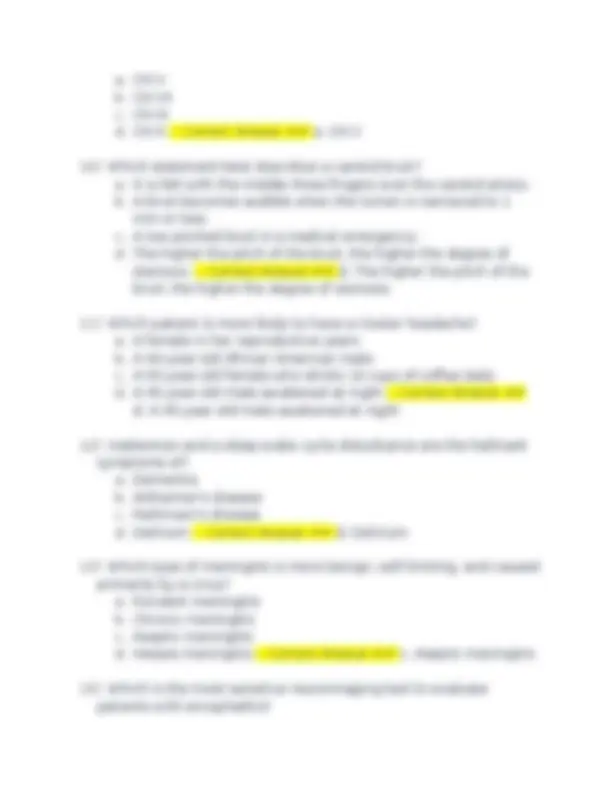
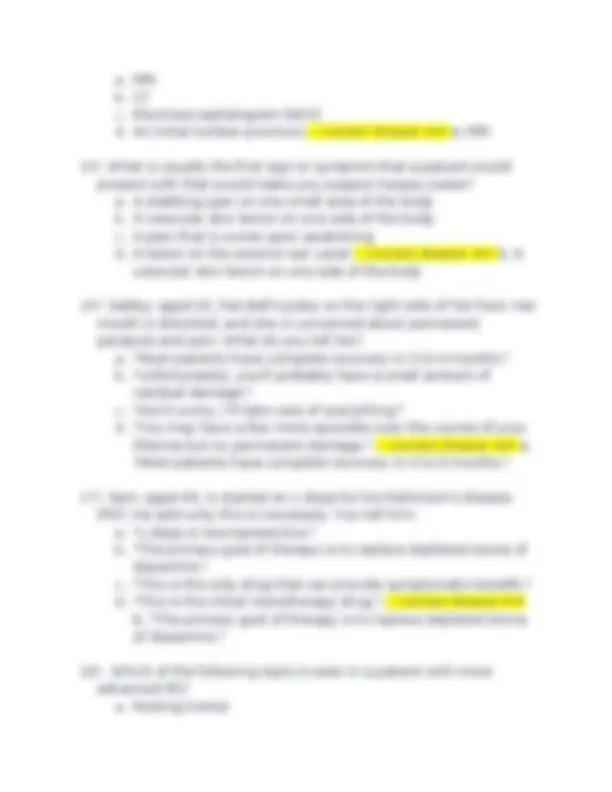
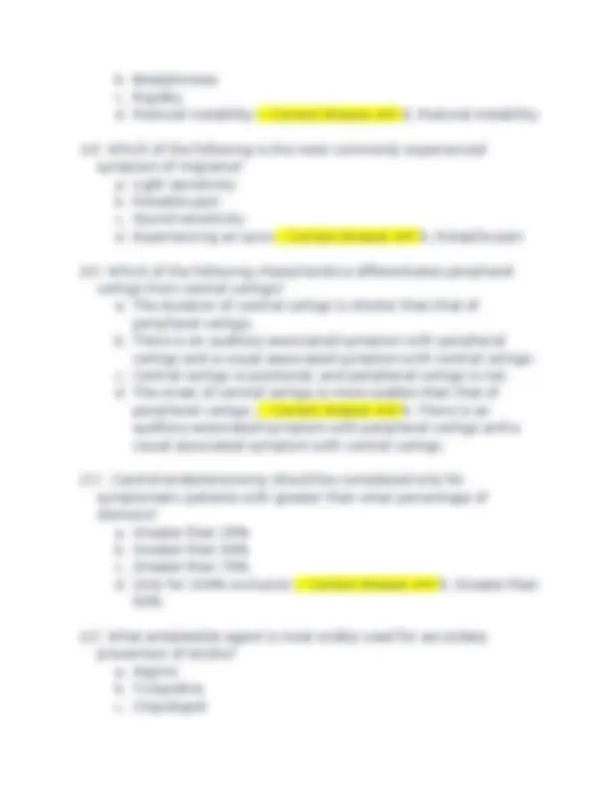
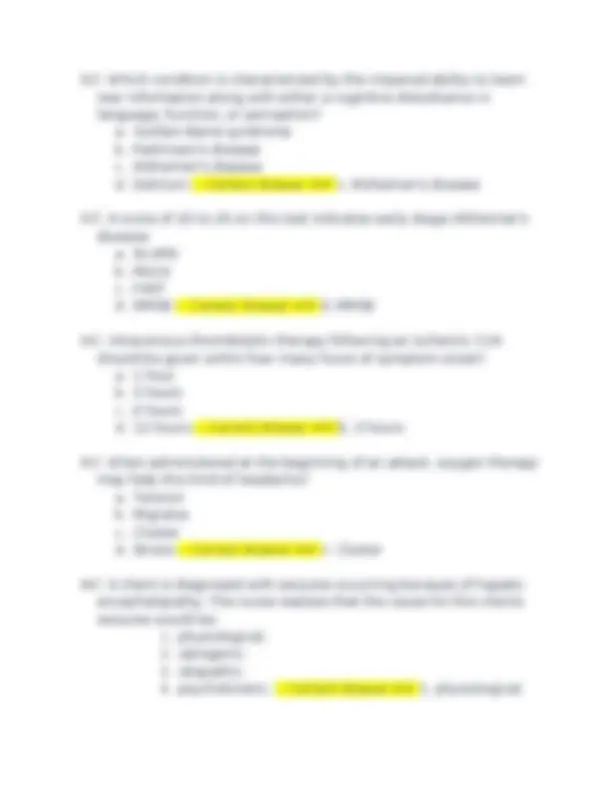
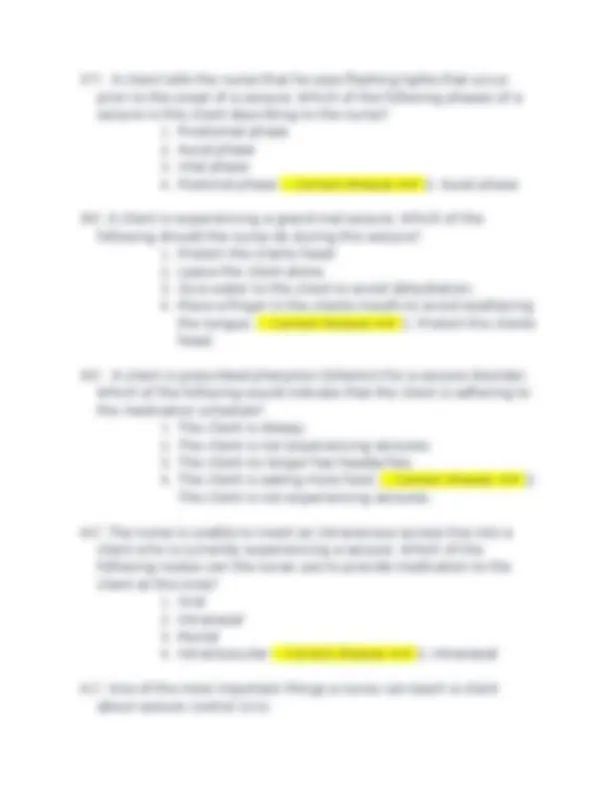
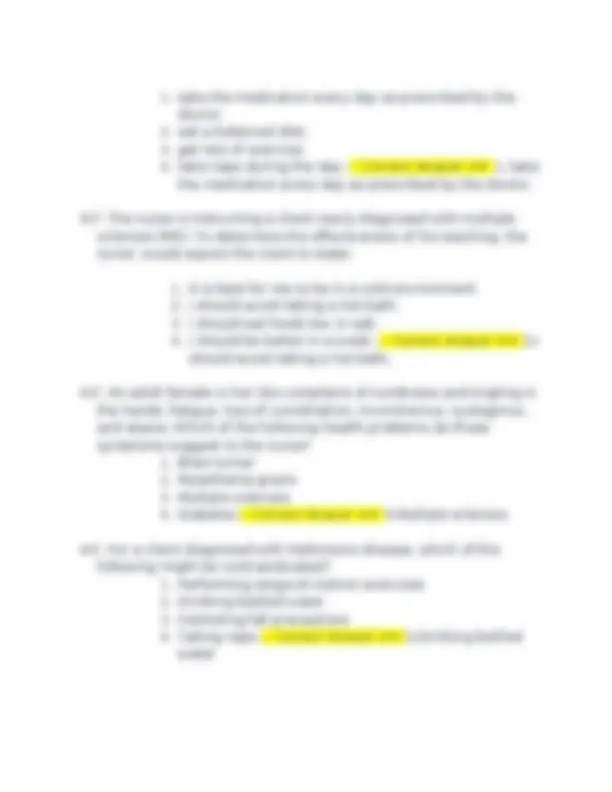
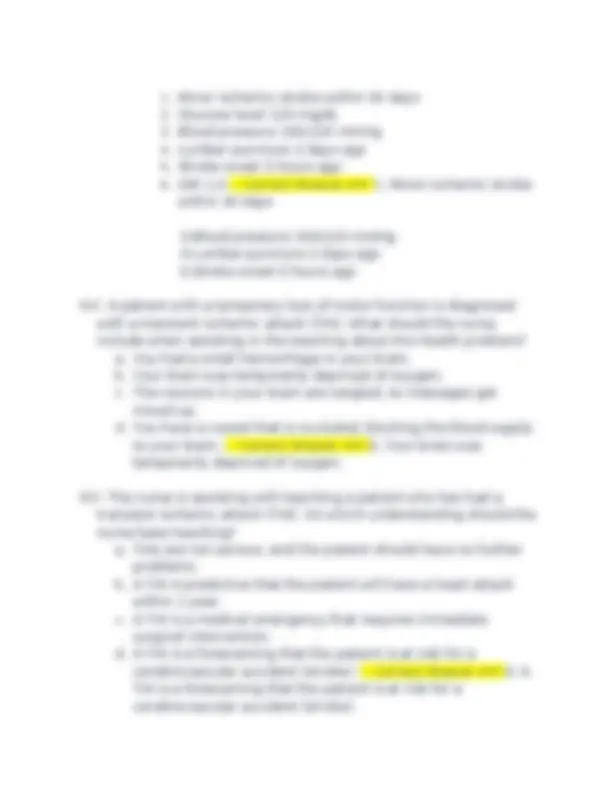
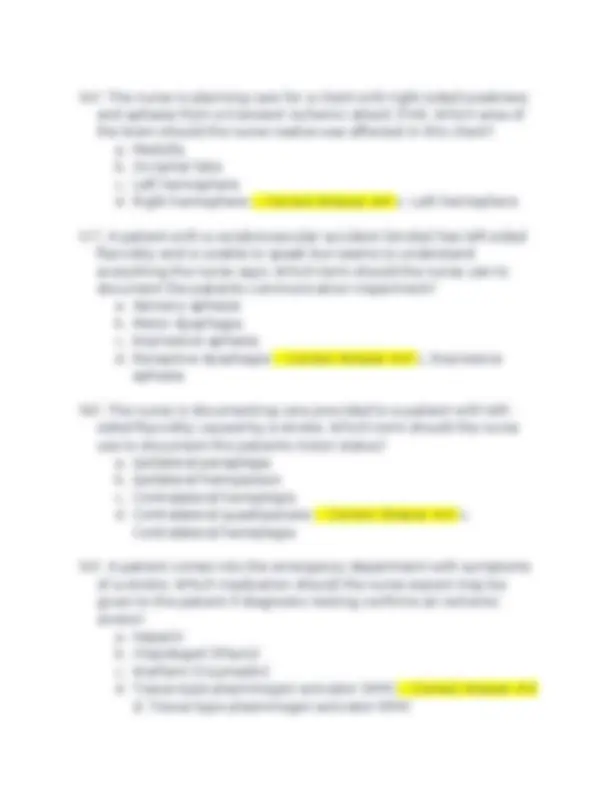
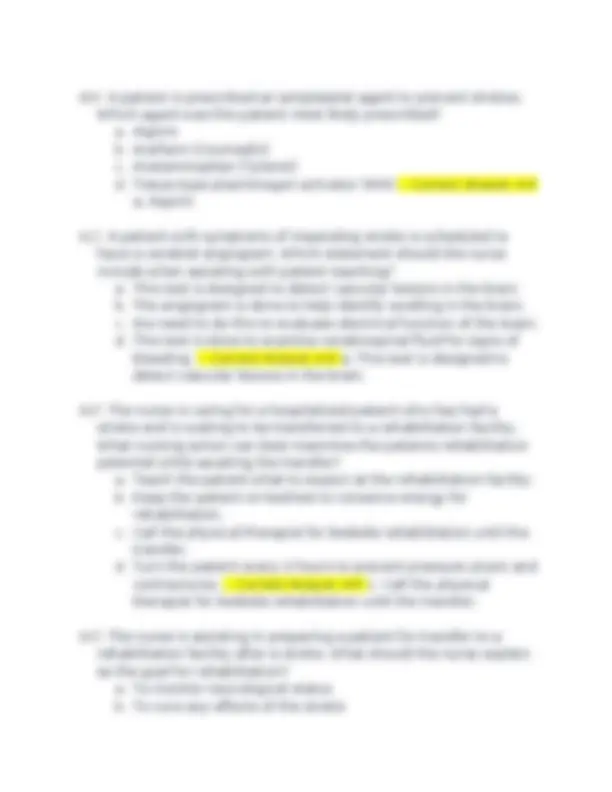
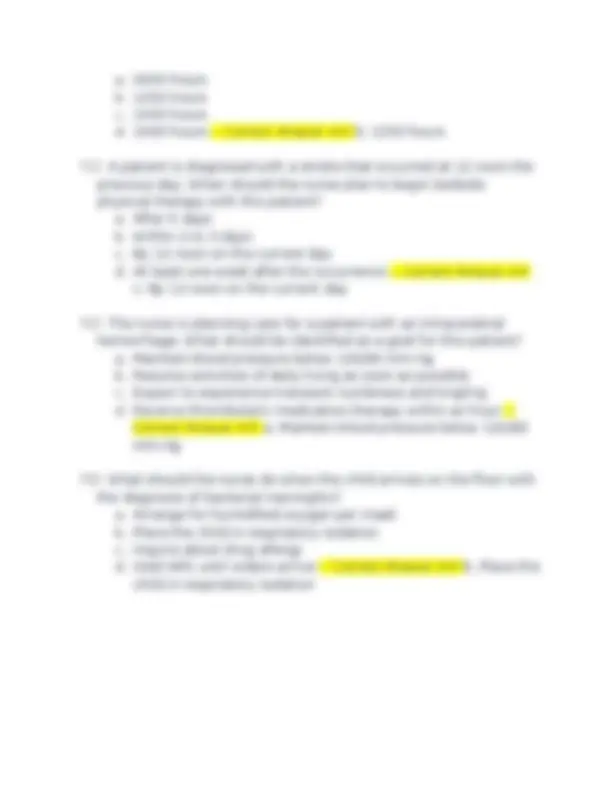


Study with the several resources on Docsity

Earn points by helping other students or get them with a premium plan


Prepare for your exams
Study with the several resources on Docsity

Earn points to download
Earn points by helping other students or get them with a premium plan
Community
Ask the community for help and clear up your study doubts
Discover the best universities in your country according to Docsity users
Free resources
Download our free guides on studying techniques, anxiety management strategies, and thesis advice from Docsity tutors
A series of multiple-choice questions and answers related to various neurological disorders. It covers topics such as confusion, dizziness, seizures, multiple sclerosis, alzheimer's disease, headaches, parkinson's disease, and more. The questions are designed to test knowledge of common neurological conditions, their symptoms, causes, and treatments. This resource can be valuable for students of medicine, nursing, or other healthcare professions.
Typology: Exams
1 / 18

This page cannot be seen from the preview
Don't miss anything!











c. Annually d. Whenever there is a problem -- Correct Answer ✔✔ b. Every 6 months
a. MRI b. CT c. Electroencephalogram (EEG) d. An initial lumbar puncture -- Correct Answer ✔✔ a. MRI
b. Bradykinesia c. Rigidity d. Postural instability -- Correct Answer ✔✔ d. Postural instability
b. After being seizure free for 6 months, patients may drive. c. Each state has different laws governing driving for individuals with a seizure disorder. d. These persons may drive but never alone. -- Correct Answer ✔✔ c. Each state has different laws governing driving for individuals with a seizure disorder.
c. To maximize remaining abilities d. To determine the extent of neurological deficits -- Correct Answer ✔✔ c. To maximize remaining abilities